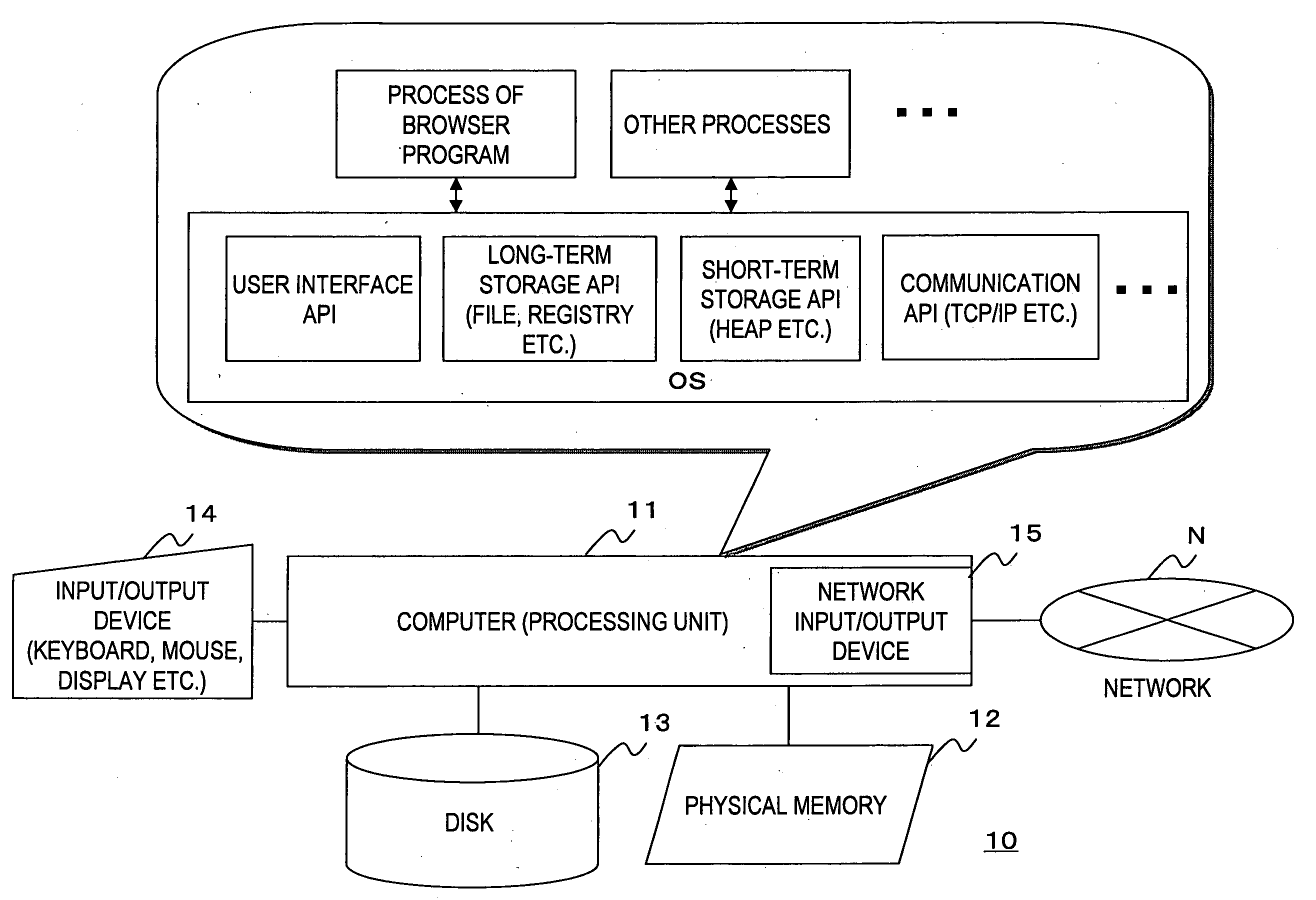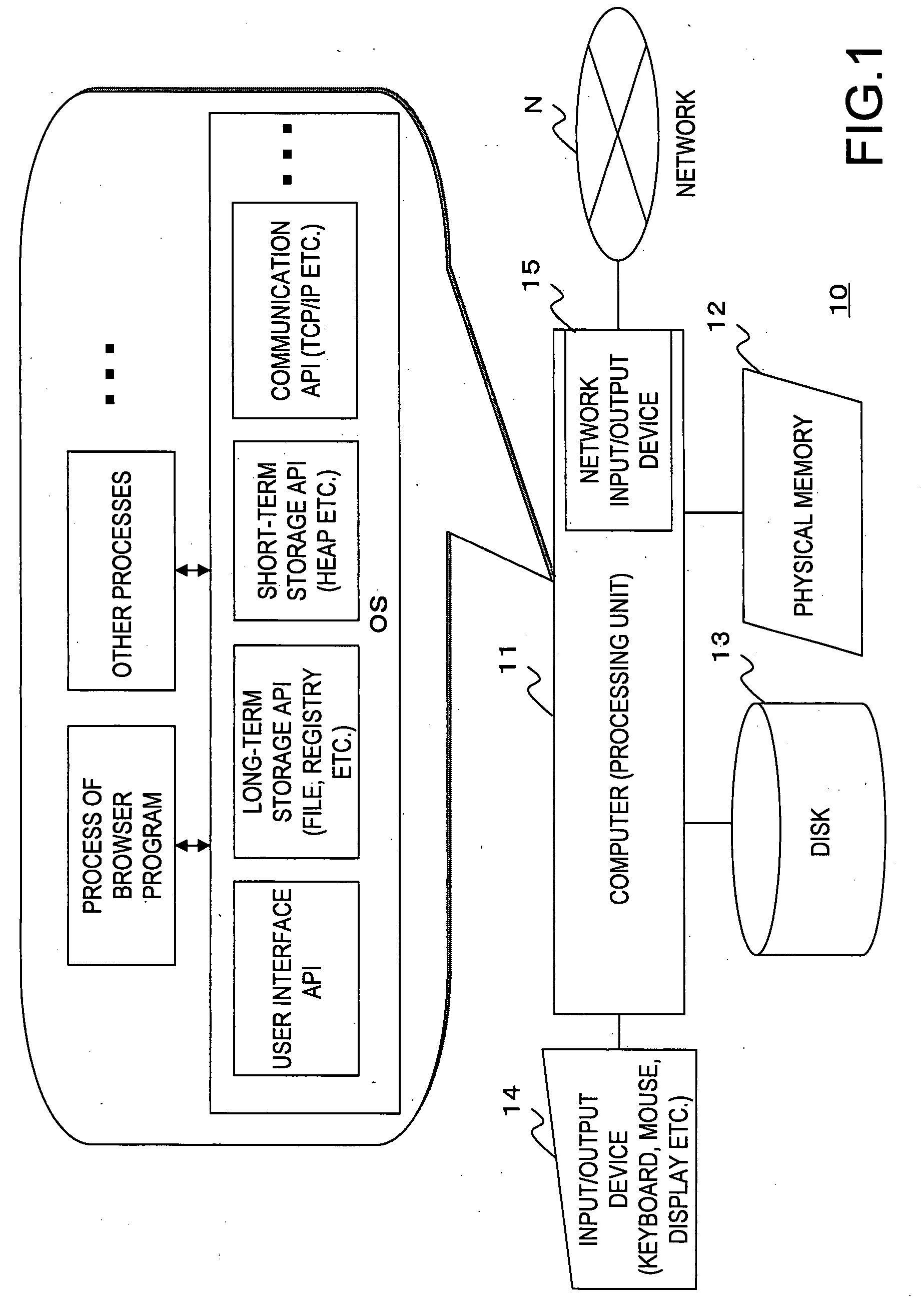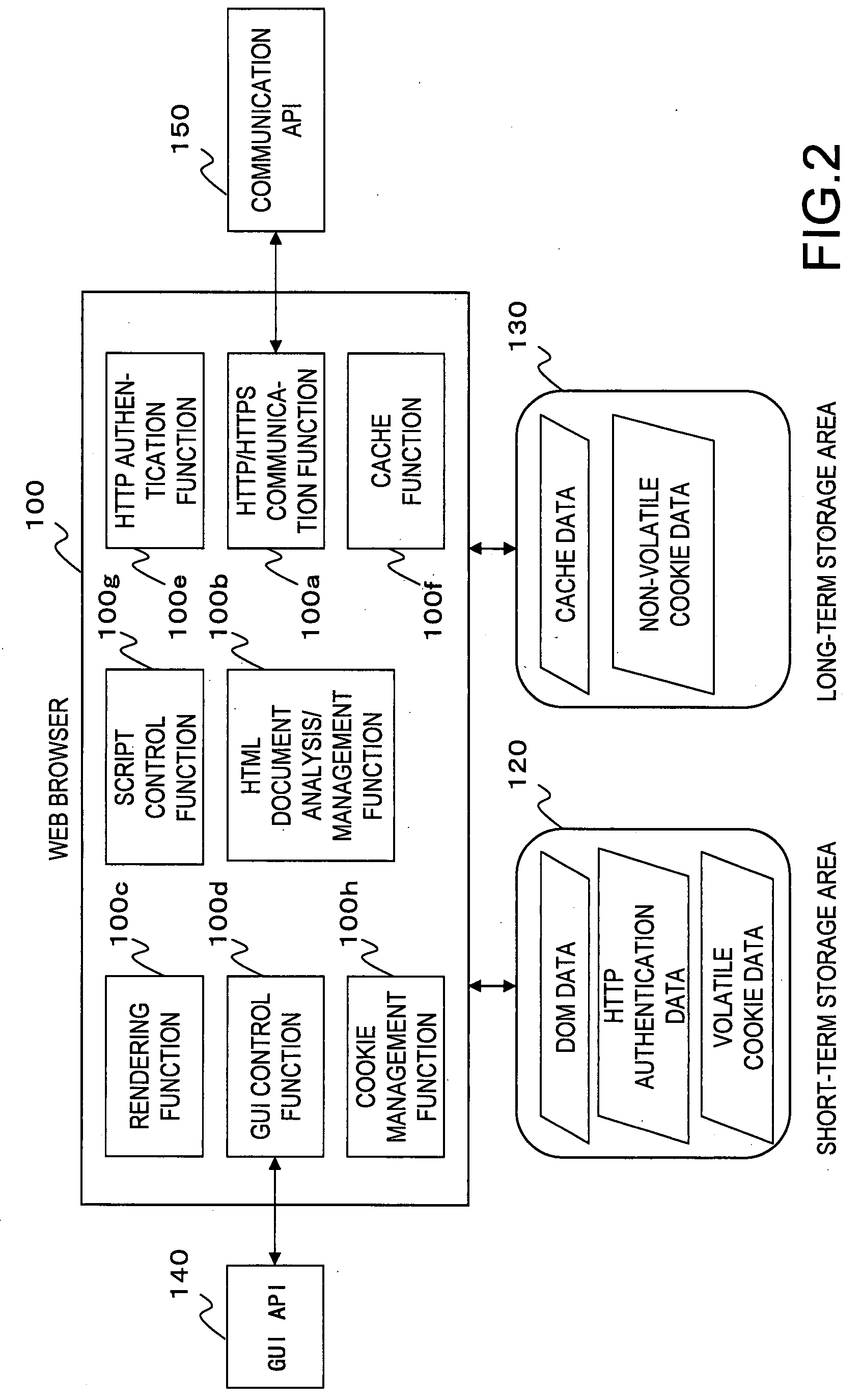Request transmission control apparatus and method
a transmission control and request technology, applied in the direction of instruments, computing, electric digital data processing, etc., can solve the problems of insufficient protection of web browsers, inability to specify nor know the cookie accompanying the request, and stateless http protocol, so as to prevent important request transmission, improve transmission efficiency, and improve convenience
- Summary
- Abstract
- Description
- Claims
- Application Information
AI Technical Summary
Benefits of technology
Problems solved by technology
Method used
Image
Examples
Embodiment Construction
[0067]An embodiment of the present invention will be described as an application program similar to a conventional, general Web browser, which operates on an operating system (OS) of a general-purpose computer.
[0068]FIG. 1 shows an example of the configuration of a computer in which the present invention is embodied. A computer 10 in FIG. 1 is provided with an processing unit 11, a physical memory 12 which is a volatile storage area, a disk 13 which is a non-volatile storage area, an input / output device 14 such as a keyboard, a mouse and a video display, an input / output device 15 to a network N, and the like.
[0069]An operating system (OS) and various application programs operate on the computer 10. The OS provides the functions of the various devices in the form of a system call or an API to process execution control (scheduling), short-term storage such as a heap, long-term storage such as a file and a registry, a communication function by TCP / IP, a graphical user interface (GUI) b...
PUM
 Login to View More
Login to View More Abstract
Description
Claims
Application Information
 Login to View More
Login to View More - R&D
- Intellectual Property
- Life Sciences
- Materials
- Tech Scout
- Unparalleled Data Quality
- Higher Quality Content
- 60% Fewer Hallucinations
Browse by: Latest US Patents, China's latest patents, Technical Efficacy Thesaurus, Application Domain, Technology Topic, Popular Technical Reports.
© 2025 PatSnap. All rights reserved.Legal|Privacy policy|Modern Slavery Act Transparency Statement|Sitemap|About US| Contact US: help@patsnap.com



